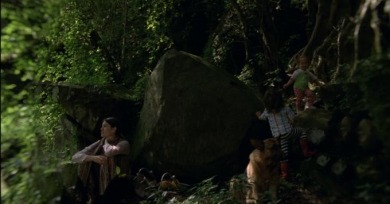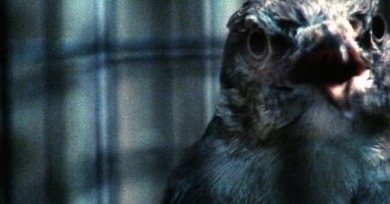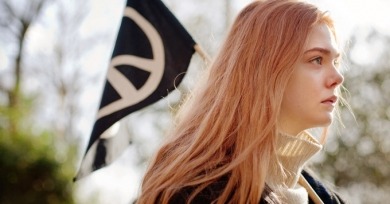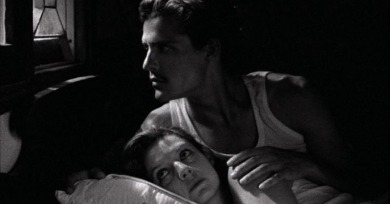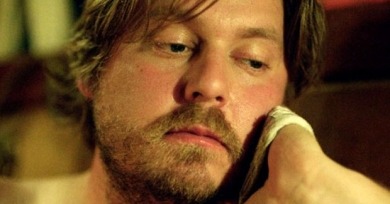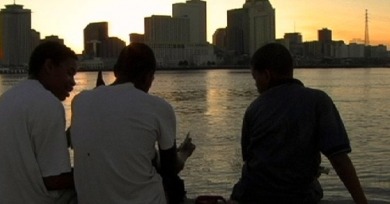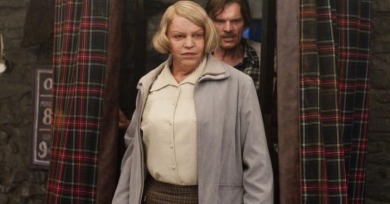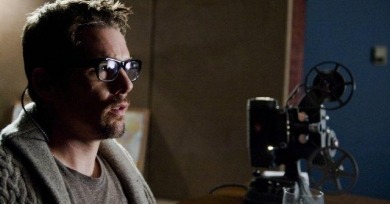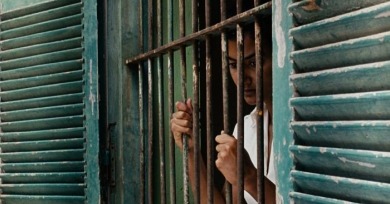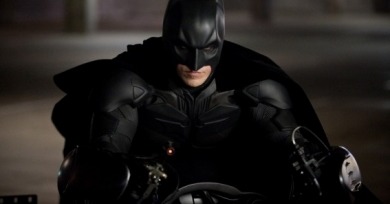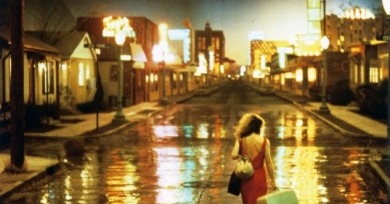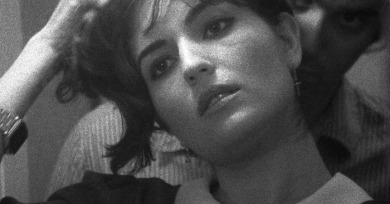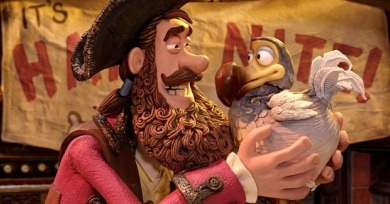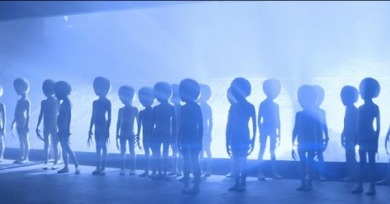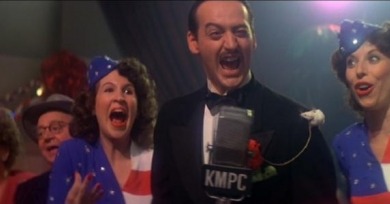Jeff Reichert
The ecstatic cinematic rhapsody that is Post Tenebras Lux is not for everybody—but noting this is not to suggest that it couldn’t be.
The whole film insistently complicates and collapses descriptions we traditionally employ to categorize our filmgoing experiences.
Sally Potter’s Ginger and Rosa opens with an extended shot of an atomic explosion. This rippling detonation signals the host of dislocations that will affect the lives of the film’s not-yet-introduced protagonists over the course of the few months in early sixties London we’ll share with them.
The problem with Zero Dark Thirty becomes less that it ends up making a forceful case for the efficacy of torturing human beings for national security—it’s that one can easily walk away from the film doubting whether Bigelow and Boal have even realized that this is what they’ve done.
Portuguese filmmaker Miguel Gomes, working on the opposite side of the world, uses the cinematic apparatus to capture, refract or simply conjure out of nothing portions of the fabulous magic lurking at the seams of mundane existence.
Rick Alverson’s The Comedy is the latest in a long tradition of films that adhere to a program of aesthetic distancing in order to level scathing sociocultural critique.
In the latest documentary from Western Ohio’s young Bill and Turner Ross, Tchoupitoulas, named after a street in the Big Easy, three young, African-American protagonists scamper through the city over the course of one long evening.
The best that the filmmaking Cerberus that produced Cloud Atlas can muster is a kind of rote blockbuster-ized uniformity which irons out all idiosyncrasies.
A Few Great Pumpkins
The Picture of Dorian Gray, The Innkeepers, The Vanishing, The Seventh Victim, Lips of Blood, Repulsion, Insidious
The most Kuleshovian horror movie in recent memory, Sinister consists often of shots of Hawke, alone in a room, simply watching and responding.
Yellow wallpaper? Red hair? Green nail polish? Inky black feral dogs?
Binding each shot together, across wintry plains, bridges, sun-soaked towns, prairies, deserts, lush forests, and mountains are the unmoving gray rails.
What if one of the world’s great film artists released her first major, feature-length narrative in nearly a decade, one based on the writings of a revered author firmly entrenched in the western canon, and no one noticed?
And so we come to the bombastic, bludgeoning finale. I can’t say I was particularly hopeful that cowriter-director Christopher Nolan would close out his wildly popular Batman trilogy with much grace, but I did go in prepared to give it a fair shot.
During his career heyday, thinking small wasn’t part of Coppola’s vocabulary, and One from the Heart easily ranks on any list of filmmaking egotism gone amok.
In the beginning, there was a hairless, pearly white albino humanoid with an exceptionally strong nose and dead eyes. Let’s call him Powder.
Shot on grainy, jittery, slate-gray 16mm, Alex Ross Perry’s The Color Wheel is a rare issuance from the lost generation of young American filmmakers in the fin du cinéma age that looks and feels “like a real movie.”
The Pirates! Band of Misfits is a terrific concept (the dry Monty Python–esque wit and handmade charms of stop-motion animation masters Aardman applied to a swashbuckling high seas adventure) casting desperately about for a movie
Many of our writers fall in that Spielbergian sweet spot: we were raised on E.T. and Close Encounters of the Third Kind and Poltergeist, rewatching videotapes of these films until they were worn out, growing so accustomed to their mechanics that they became The Movies themselves.
Arriving at the approximate midpoint between the two most devastating acts of war ever carried out on American soil, 1941 is a prophetic vision for anyone who’s thought seriously about buying some duct tape or packing their home and fleeing from residency in a major city during a crisis.
